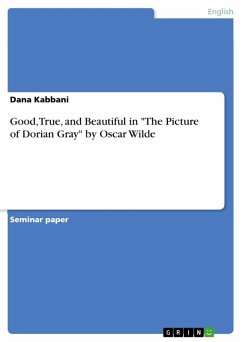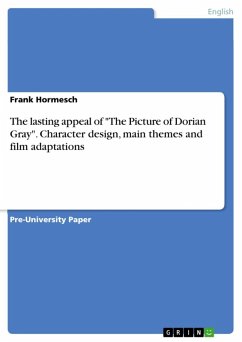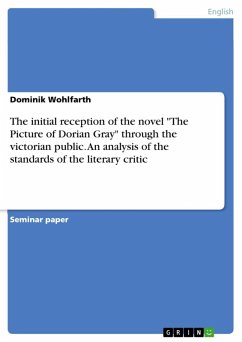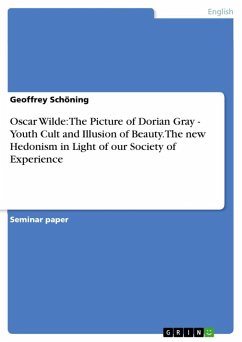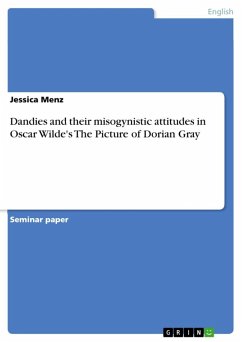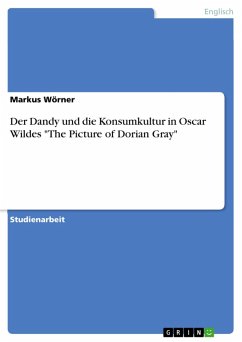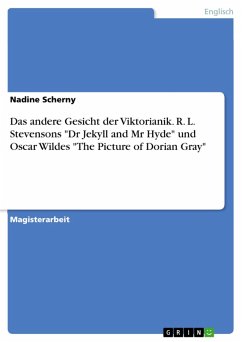Seminar paper from the year 1998 in the subject English Language and Literature Studies - Literature, grade: 1,0 (A), Grinnell College (English Studies), course: The Tradition of English Literatue, language: English, abstract: 1. Introduction: In the following, the notions of "good, true, and beautiful" in Oscar Wilde's The Picture of Dorian Gray will be examined, both separately and as they relate to one another. These adjectives carry a positive meaning, and they create a distinct contrast to the critiques and accusations that have been raised against the book and its writer. The Picture of Dorian Gray is in many ways a "pivotal work" (Lawler 285) in Oscar Wilde's life and career. It sums up his major influences of the 1870s and 1880s, and anticipates the style of his celebrated comedies to come. Why was the public's opinion, which meant his ruin in the end, so important to Oscar Wilde? To answer this question it is necessary to look at Wilde's audience and environment. Wilde was "the epitome of a new type of professional writer" (Small 3). Thus The Picture of Dorian Gray and the scandal it provoked have to be situated in the context of late Victorian social institutions of journalism, advertising, homosexual communities, criminology, etiquette, and theater (Gagnier, Cambridge Companion 27). Wilde had always been a great borrower and collector of literary culture, and therefore was often accused of plagiarism, but he transformed everything into his own way of expression. It is the blending of original invention and existing art that enables Wilde to create new effects and moods. This blending helps to explain how The Picture of Dorian Gray embraces the range from classic Greek and Latin masters to contemporary English, French, and German writers. From its first appearance in the spring of 1890, The Picture of Dorian Gray has suggested to readers parallels to other works, ancient or modern, in English or any other language. To specify the focus, the novel can be regarded as a study of various Victorian art movements corresponding to different stages in the development of Victorian human nature, and the main characters are meant to be personifications of these art movements and psychological states (Nassaar 37). This paper tries to shed light not only on Wilde's paradoxical style, but also on the 1890s society by answering the following questions: Which are the major art movements at the end of the 19th century; how far do they affect Wilde's work? To what extent is the book good, true, and beautiful? Or are the opposites more appropriate? [...]
Dieser Download kann aus rechtlichen Gründen nur mit Rechnungsadresse in A, B, BG, CY, CZ, D, DK, EW, E, FIN, F, GR, HR, H, IRL, I, LT, L, LR, M, NL, PL, P, R, S, SLO, SK ausgeliefert werden.

